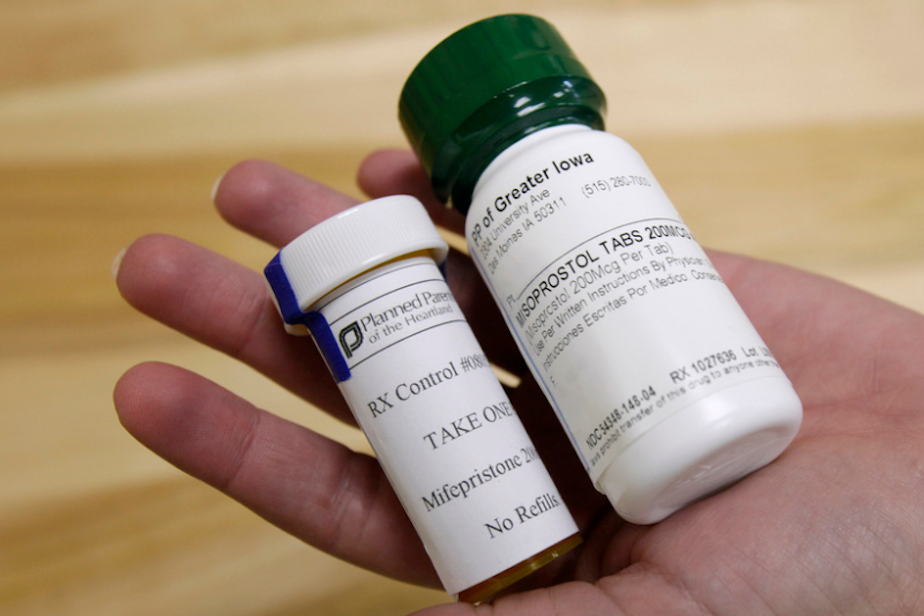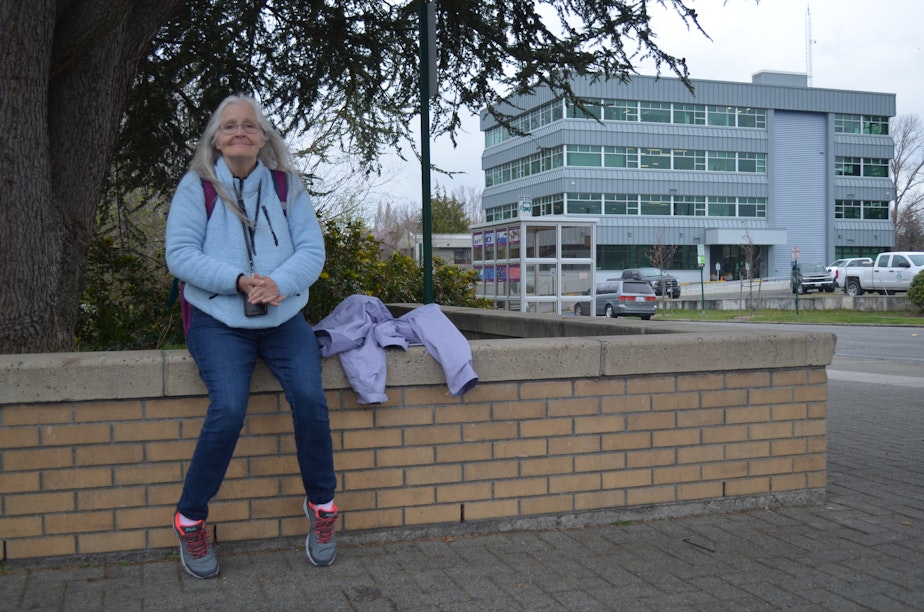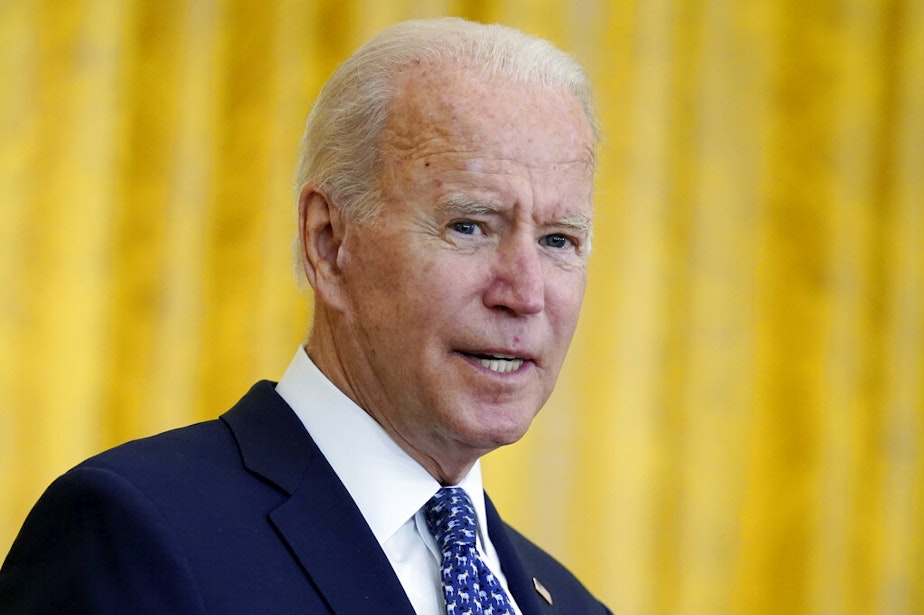2 words to understand amid abortion drug headlines: Today So Far

- Recent court decisions have highlighted the drug mifepristone, but it's not the only abortion drug on the market.
- A middle housing bill has gone through a few changes as lawmakers work on it in Olympia.
- Have you noticed a poem showing up on KUOW.org every day this month?
This post originally appeared in KUOW's Today So Far newsletter for April 11, 2023.
The main thing to understand about recent abortion care news is that the legal drama has targeted one particular abortion drug. But it's not the only abortion drug available to health care facilities.
That doesn't mean that states like Washington won't be impacted by yet another anti-abortion move at the national level.
"One of the things we've seen since the reversal of Roe v. Wade is that access to abortion has been upheld and maintained in states like Washington because we have robust state-level legal protections," freelance reporter Megan Burbank told Seattle Now this morning.
"We also tend to have fewer abortion restrictions. What we are seeing now is that Washington has become more of a destination for abortion care. It always has been ... this has not been an overnight shift that happened with Roe v. Wade. Washington has always been a destination for people seeking abortion care from states that have severe restrictions, like Idaho.
"One of the things around this particular story that has been confusing is that a lot of headlines have framed it as 'restrictions' or 'a ban on medication abortion that will take effect nationwide.' Well, it's not really that. It's about one particular drug that is used in medication abortion. It certainly will have an impact though."
Here's the situation. A federal judge in Texas ruled last week that the FDA never had authority to approve the drug mifepristone. It is used in medication abortions. At the same time, a judge in Washington state ruled that the FDA cannot pull the drug. These two rulings contradict each other, which means this issue is likely headed to the Supreme Court.
Even if mifepristone ultimately goes away, that doesn't mean medication abortions will be unavailable. Burbank notes that doctors have other options. To understand those options, take a minute to get familiar with these two words: "mifepristone" and "misoprostol." Those are the two drugs to know. Both are used in medication abortions. Both start with "m." But "misoprostol" is easier to say, which is good because that is the drug that isn't being run through the courts.
Sponsored
"Mifepristone is one of two drugs used in most medication abortions; misoprostol is not at the center of this case, which is important because it means that even if mifepristone is taken off the market there will still be a protocol for medication abortion that is accessible and works," Burbank said.
As NPR reports, that protocol is using just misoprostol. The downside is that this regimen takes a bit longer than the two-drug combo. Listen to Seattle Now's full conversation with Burbank here.
In the meantime, Washington state has stockpiled about 30,000 doses of mifepristone while it remains in legal limbo. California has made a similar move by stocking up on misoprostol.
KUOW has reported a lot on the efforts to get more "middle housing" in Washington state. A bill to accomplish that has been working its way through the state House and Senate, but it is going through quite a few tweaks in the process. Here's an update.
Under companion bills HB 1110 and SB 5190, different types of "plexes" would be allowed in neighborhoods, depending on the size of the city, and the proximity to mass transit. For example, fourplexes (a building with four housing units) would be allowed in cities with more than 75,000 people. That means a fourplex would be OK in Kirkland, Renton, Pasco, etc.
Sponsored
If a city is smaller, between 25,000 and 75,000 people, now we're talking about allowing duplexes. What about cities that are much larger? What about Seattle, Spokane, or Tacoma? Now we're getting deeper into the tweaks. Sixplexes would be allowed in cities with more than 75,000 people, if two of the units are reserved as affordable housing and the buildings are within a quarter mile of mass transit.
Those are just the wonky details that I didn't think would make you fall asleep while reading. There are more changes to the bills that involve parking (or lack thereof) and nixing the design review process. Soundside has the full story here.
We are now about one week into KUOW's Poetry in Bloom series. You may have noticed a few poems showing up on KUOW.org recently. This is because Seattle Civic Poet and Ten Thousand Things host Shin Yu Pai has curated this series so you get a new poem every day in April, which is National Poetry Month.
The series kicked off last week with Carol Levin's poem "Soft Edible Bodies on April Fools Day," which talks about our local tradition of clam digging. Sharon Hashimoto gives some love to the Theodore Jackson Observatory. Luther Hughes remembers the lives of two gay Black men who were murdered on Capitol Hill in 2014. Bob Redmond offers a few haiku, a form he has been writing for nearly two decades. Ching-In Chen writes about migrant massage parlor workers, sex workers, and care workers in the Seattle area. I could go on. There's a lot so far, and there is even more coming. I find that this is a pretty great way to start each morning, or end each day. So bookmark this poetry series here.
AS SEEN ON KUOW
Sponsored

Leslie Harvey, 66, has spent time in the Compass Health Crisis Center in Bellingham five times when she was contemplating suicide. King County does not currently have any walk-in behavioral health crisis centers. Whatcom County has one, with 16 beds, owned by the county and operated by Compass Health. In King County, a levy is on the current ballot that aims to change these circumstances by funding five behavioral health crisis centers, including one for children. (Eilis O'Neill / KUOW)
DID YOU KNOW?
In 1839, Robert Smalls was born into slavery in Beaufort, South Carolina. When the Civil War was raging around his state, he knew he had an opportunity to escape. That escape was like no other, and influenced the rest of his life, and American history.
As a youth, Smalls worked in a hotel, as a street lamplighter, and eventually as a longshoreman. His proficiency on the water led Confederate leaders to use him for the war effort. He was assigned to steer the CSS Planter, staffed by enslaved people. In May 1862, the ship was restocked with new guns, and resupplied with ammo and firewood in Charleston. Not far away was a Union blockade of ships. In Charleston, Smalls convinced the ship's owners to allow the crew's families to visit them. As the ship's three white officers left for the evening, leaving the crew aboard, the families came to visit. They didn't realize that they would not be going back ashore, not right away. That's when Smalls hatched a plan he had been crafting for some time. With their families aboard, the crew sailed the CSS Planter, fully loaded, directly to the Union Navy's ships. The Confederate flag was taken down, and a white flag replaced it. After surrendering the ship, a United States flag quickly went up. The Union didn't just get the ship. Smalls also came with a captain's code book, a map of mines and torpedoes around Charleston's harbor, as a well as important knowledge of the region's waterways.
Sponsored
Congress awarded Smalls and his crew a small amount of money for delivering the ship. Smalls went on to serve in the US Navy and Army and helped the Union win the war. After the Union's victory, Smalls decided to return to Beaufort. He bought his former enslaver's house (who lost the home because he refused to pay taxes). He then started a school for African American children, and helped form the Republican Party of South Carolina. Six years after his escape, he was elected to South Carolina's House. He then represented South Carolina in Congress from 1874 to 1887.
Fast forward about 100 years. The U.S. Navy launched the USS Chancellorsville in 1988. The cruiser is currently stationed in Yokosuka, Japan. The thing is — this ship was named after a Confederate-won battle. That's why the Navy just renamed it. It is now called the USS Robert Smalls.
ALSO ON OUR MINDS

Sponsored
The U.S. national emergency to respond to the Covid-19 pandemic ended Monday as President Joe Biden signed a bipartisan congressional resolution to bring it to a close after three years — weeks before it was set to expire alongside a separate public health emergency.

